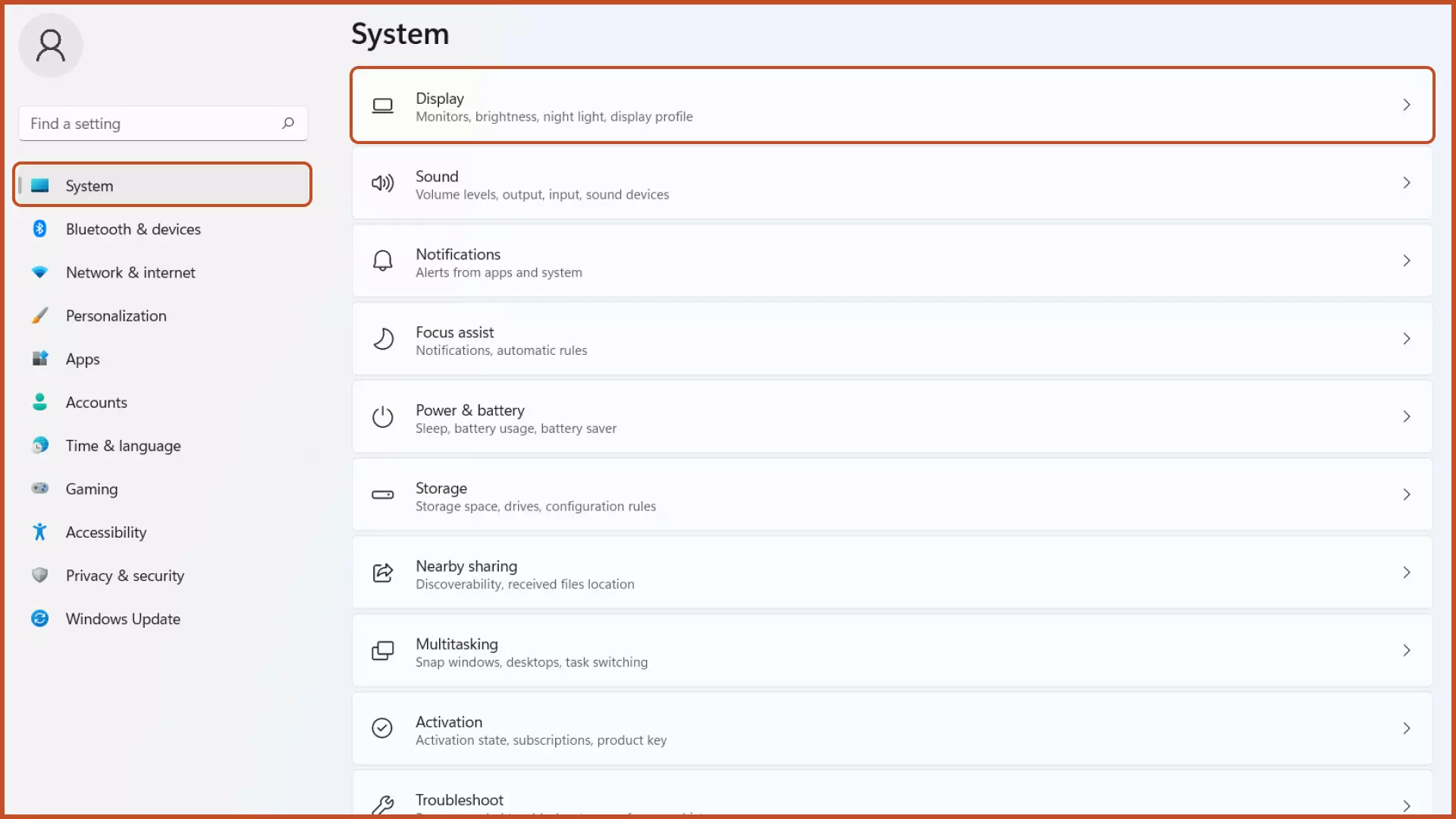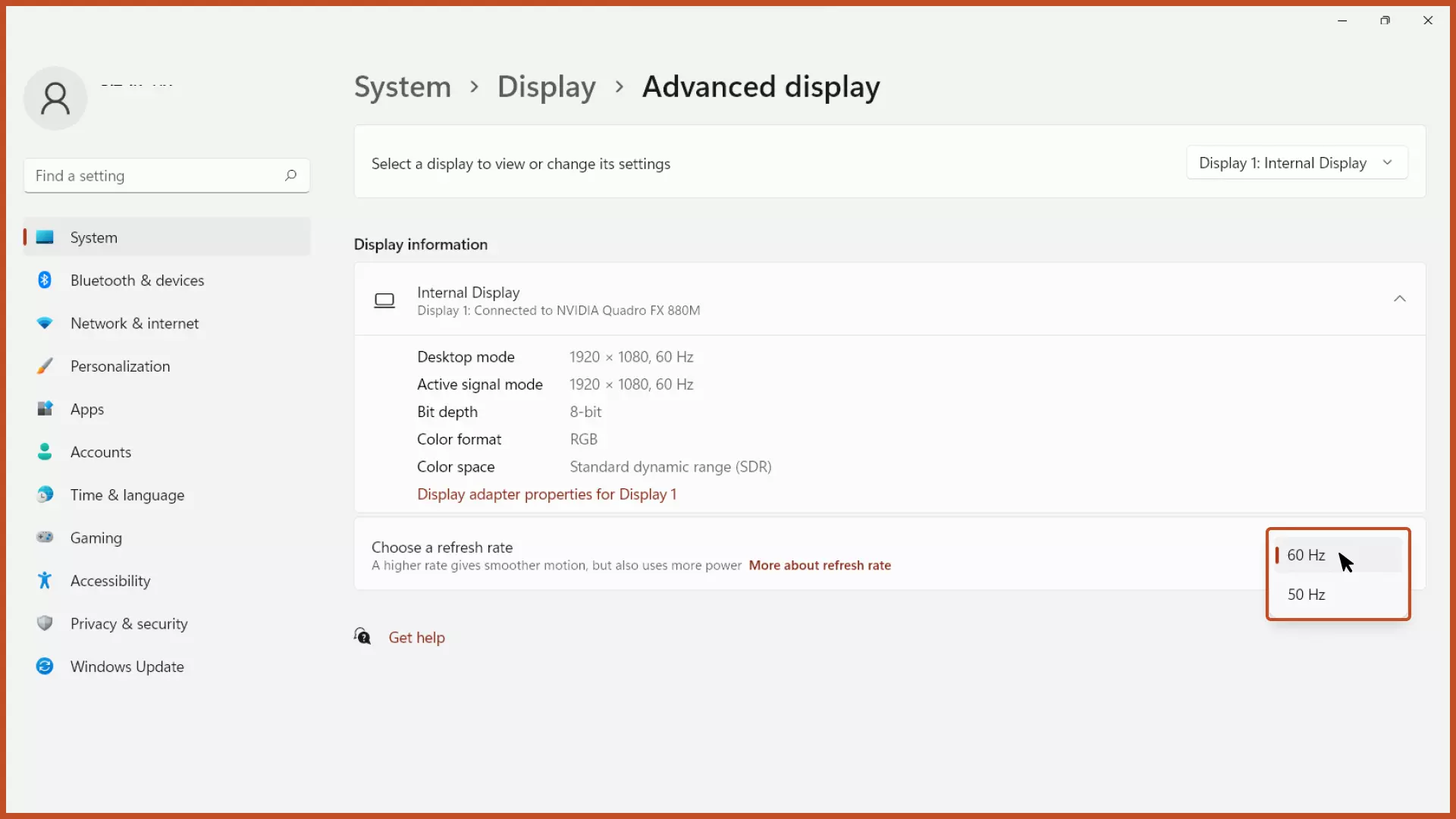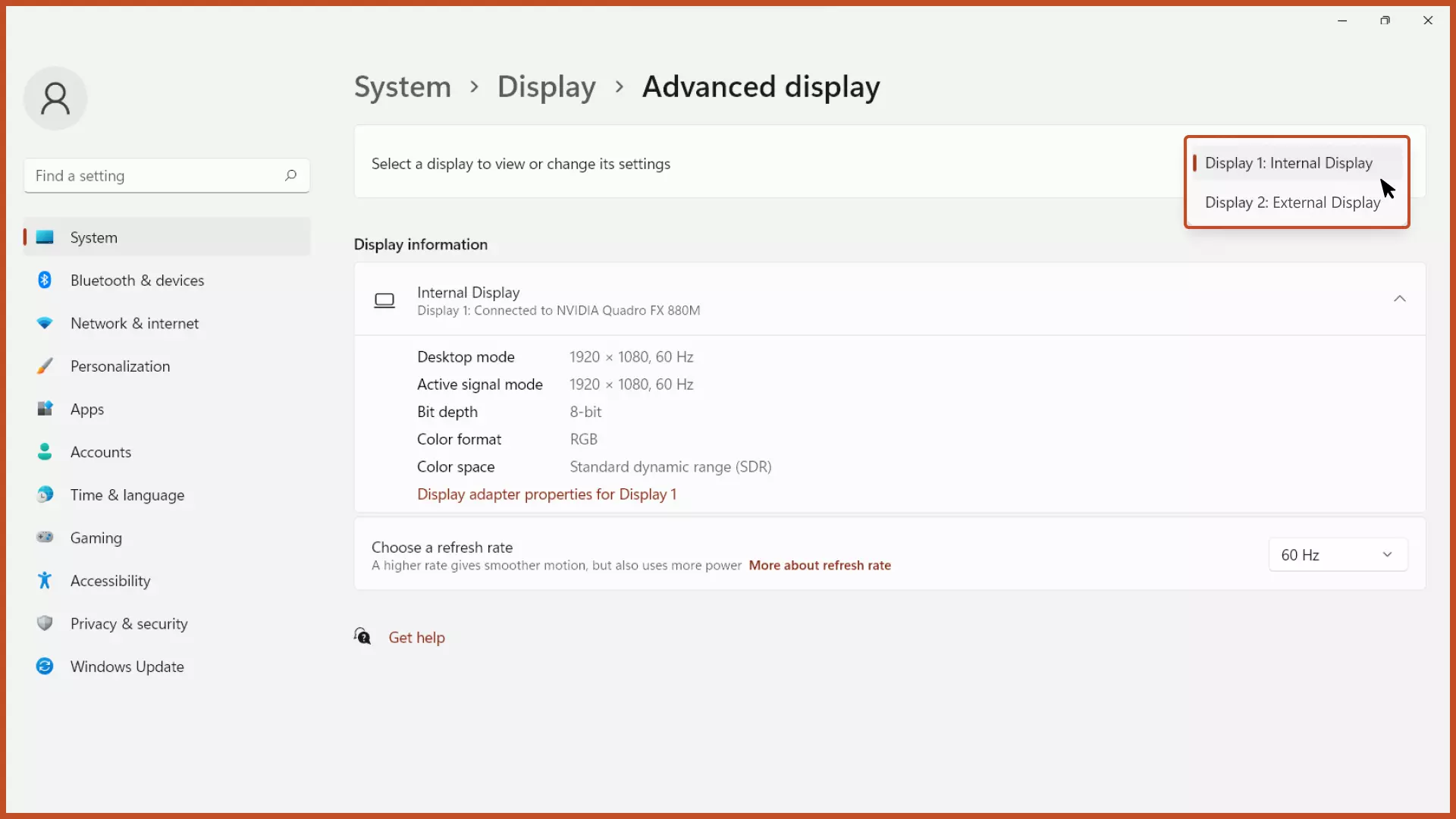Overview – Monitor’s Refresh Rate
If your screen appears to be flickering frequently when gaming or viewing movies, you should utilize the maximum capabilities of your monitor to produce frames at the highest available resolution by increasing the refresh rate of Monitor.
The Monitor refresh rate is the frequency at which a monitor displays an image, measured in Hertz (Hz), and it is usually determined by the monitor’s scanning frequency. It is the number of times an image is refreshed each second.
Example: A monitor having a refresh rate of 60 Hz, the display 60 times per second.

A reduced refresh rate might create issues like ghosting or smearing, causing eye fatigue. When drawing elements on the screen, a greater refresh rate equals less delay.
By the end of this article, you’ll be able to change the monitor refresh rate on your computer.
How To Change Refresh Rate in Windows 11
Step #1: Open the “Windows Settings” from the Start menu or press the ‘Windows Key + I’ Key Combination Shortcut.

Step #2: Select the “System” option from the sidebar and click the “Display” option.

Step #3: Scroll and select the “Advanced Display” option under the Related Settings section.

Step #4: Choose the desired refresh rate from the dropdown menu.

Note: If you’re using a multi-monitor setup, use the dropdown menu in the top bar to pick the monitor for which you need to change the refresh rate.

FAQs Related to Monitor Refresh Rate
What is the difference between the Refresh Rate (Hz) and FPS?
The Refresh Rate is the number of times per second your monitor can redraw the entire screen and FPS (Frames per second) is the number of frames the GPU renders and outputs. For example, your monitor can process a 60Hz refresh rate but your GPU produces 140 FPS, in this scenario, you’ll experience 60Hz only.
Does high refresh means high better picture quality?
No, higher refresh rates don’t necessarily guarantee better picture quality because other parameters such as resolution impact the picture quality as well.
What is a good refresh rate for a monitor?
There are no hard and fast rules for what determines a good refresh rate for a monitor. It is dependent on your usage and varies accordingly. If you mainly use your monitor for casual usage, then, 60Hz would be fine. If you’re using the monitor for VFX, animations, or high-rendering extensive tasks such as Motion Graphics and Hardcore Gaming, then, a refresh rate ranging from 120Hz to 240Hz would be sufficient. However, keep in mind that the higher the refresh rate, the safer and better for your eyes.
What happens if the FPS is higher than refresh rate of Monitor?
If your GPU is capable to produce high frames than your monitor, you’ll notice only the maximum number of frames rendered by the monitor. Example: Your GPU is capable to produce 144Hz FPS, but your monitor renders frames at 100Hz refresh rate at max, in this scenario, you’ll experience 100Hz FPS only as the rest of the frames are limited by the monitor.
Does refresh rate affect FPS?
No, the refresh rate doesn’t affect the Frames per second (FPS). Refresh Rate is the number of times per second your monitor can redraw the entire screen and FPS is the number of frames the GPU renders and outputs. Both of them are completely distinct but dependent on each other. If the GPU renders more frames than your monitor, you’ll notice the frames rendered by the Monitor only.
Next Steps
We’ve successfully covered how to change the refresh rate of a monitor in Windows 11. Once you’ll increase the FPS, you’ll notice a much smoother display especially during gaming, and graphics-consuming tasks.
In general, we may say that the FPS produced by the monitor and GPU are distinct yet interconnected. If your GPU produces more frames than the monitor, you’ll see only the refresh rate rendered by the monitor. So, having a strong GPU isn’t necessarily a guarantee of high FPS unless you also have a monitor with a high refresh rate as well.
Further, customize your computer’s configuration by following the related articles below.
Related Articles
Block Users From Installing Programs in Windows
Block other users from installing software on your device without your permission to maintain privacy and security.
Stop Background Applications in Windows
Free up RAM to boost performance by preventing apps from running in the background, so, you can focus on other important tasks efficiently.
How To Show Hidden Files in Windows
Show all the files on your device and have full control for custom configurations on your device.





